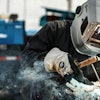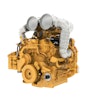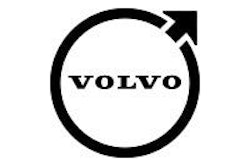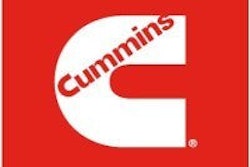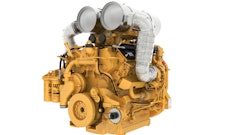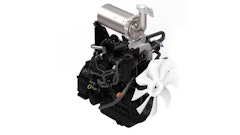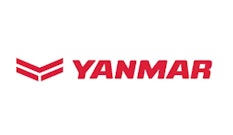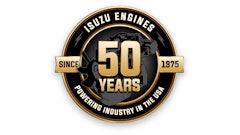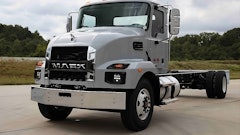
At one time, meeting diesel exhaust emissions requirements was a burden placed mainly on manufacturers of new equipment. But as local air quality districts strive to come into compliance with mandates in the Clean Air Act to conform to National Ambient Air Quality Standards, emissions from existing equipment in contractors' fleets has been targeted.
In most metropolitan areas, regions that exceed minimum air quality standards for any one or a number of pollutants are classified as non-attainment zones. In these zones, the federal government can withhold highway funding, and state or local legislatures can enforce their own requirements to reduce pollutants more quickly. Since not all non-attainment zones are dealing with the same pollutants or severity of pollutant levels, a patchwork of local regulations has sprung up. In the case of diesel engines, the main pollutants generated are nitrogen oxide (NOx) and particulate matter (PM). Local reductions of these pollutants will continue to escalate into the foreseeable future. While more modern fleets may conform to local requirements, many of the older fleets may not.
So what does this mean to you?
If you plan to work in a non-attainment zone - which includes many of the metropolitan areas across the U.S. - you may need to conform to these emerging requirements. In addition, many project owners are putting their own emissions restrictions into bids as part of the green building movement.
"Emissions requirements will be in bids, and if it is not considered up front, it can turn a profit into a big loss," says John Bartz, emission solutions manager, Volvo Construction Equipment. "There have been contractors and subcontractors prohibited from sites due to not having the required emissions equipment. This is not a problem that gets fixed overnight."
Compounding the problem is the fact that rules in each non-attainment zone can vary. "This can lead to a lot of confusion for the contractor as there is no consistency," says Bartz. "As a manufacturer, we are always listening to our customers and to what is going on in the market. Never bid blind, and use all the contacts you have to gain a full understanding of the regulations. State or city officials are usually very helpful in explaining what is required. After that, your Volvo dealer can help identify what the best path is for a specific piece of equipment."
Cummins' Clint Schroer adds, "With a large contract, you need to make sure you understand local regulation requirements before purchasing new equipment, or determining if you are going to repower, rebuild, replace or retrofit an existing piece of equipment. If you are working with an existing piece of equipment, you will need to consider the installation cost, as well as the cost of any engine or device. Considering the total cost of [adding] an aftermarket solution to the piece of equipment will be the best way to make an educated decision."
Repower or retire?
According to Schroer, there are a number of ways fleets can be made cleaner. "The options are: repowering, rebuilding, replacing, refueling and retrofit aftertreatment," he says. "Cummins Emissions Solutions provides a wide range of product options, depending upon the emission reduction objective.
"Currently, the EPA has said that on-road solutions may be applied to off-road applications, and we have a number of products that would apply," he continues. "Our on-highway experience and technology give us insight in designing off-highway solutions, such as a DPF that meets the construction market's rugged and demanding conditions. Our distributors have the capability to not only provide installation and service support, but to also help customers make the best product choice depending on need or objective."
Repowering is one of the most popular options. "That is an important solution because it brings tangible value to a piece of machinery," says Glen Chrusciel, program manager, retrofit and repower for John Deere Power Systems. "[Repowering] a machine from Tier 0 up to a Tier 3 not only gives you the emissions compliance, it also adds residual value to the machine, as well as productivity and fuel economy."
But there are other alternatives. "Some of the solutions are retiring equipment or moving equipment to other markets," says Joe Mastanduno, product marketing manager, engine/drivetrain for the John Deere Construction and Forestry Division. "A lot of big fleets have been retiring the old machines and putting new ones into emissions-sensitive markets."
Sometimes the length of a project will influence the decision. "If it is a short-term project, renting a newer machine is another solution," Chrusciel adds.
Aftermarket option
Installing aftertreatment devices is another option. The cost of these devices can range from $2,000 on up. "The market for off-road retrofit is complex. There is significant proliferation of equipment and engine combinations across all horsepower ranges and applications," says Schroer. "Our strategy is to use our Tier IV development experience to bring products to the off-road market that will satisfy Best Available Control Technologies (BACT) requirements and will encompass various aftertreatment technologies."
When looking at aftermarket solutions, Schroer recommends comparing the cost of the solution and the installation cost with the cost of your other options. "For example, it might be easier to update a Tier II to a Tier III with an engine repower instead of using aftermarket emission solutions," he notes.
Caterpillar Emissions Solutions also offers a variety of engine repower, engine emissions upgrade kits, as well as retrofit aftertreatment systems to help customers meet local emissions requirements, Michael Readey, Caterpillar emissions solutions product manager, points out. "Our role is to work with the customer's local Caterpillar dealer to understand what they are trying to do - to reduce particulates, reduce NOx or other emissions," he explains. "We then match them up with the most cost-effective solutions we have available."
Economics should dictate which solution is used. "Retrofit devices provide a cost-effective alternative to the contractor," says Bartz. "However, when looking to reduce emissions and investing in the equipment, the individual piece must be evaluated, along with its place within the fleet. Some local requirements have actually required Best Available Technology (BAT), which specifically requires retrofit on any and all equipment."
Also keep in mind that different levels of retrofit may be required for various jobs. "If a machine is going to be retrofit, it is best to go with the highest level (Level 3+) available," Bartz advises. "One bid may require a Level 2 verified device, but if the next bid requires Level 3+ and you installed a Level 2, that device isn't going to work and it is just wasted money. Devices cannot be upgraded."
And while available, aftertreatment devices may not be a practical alternative for Tier 0 and Tier I equipment. "In order to install an aftertreatment device, you need to make sure you have a very good engine without excessive oil consumption or sloppy injectors," says Chrusciel. "These engines have higher emissions, so they don't work well with DPFs. Tier II and newer work best with aftertreatment devices."
If a given engine certification is required, aftertreatment devices may not be an option. "None of the verified aftermarket retrofit devices will change the certification of the engine," Bartz explains. "A Tier II machine will remain a Tier II even though specific emissions have been significantly reduced. Credit is given for the reductions achieved within the California off-road rule and recognized within the other requirements."
Verified or certified?
It is important to note the difference between verified and certified emission control devices. "Verification is similar to certification in that it is a stamp of approval by the California ARB or the EPA for the device as meeting emissions targets," says Readey. "Certified means the technology is installed at the factory and approved by EPA/CARB. Verified means the technology is approved to be installed by a third party outside the OEM facility."
Chrusciel points out that California ARB has its own verification process. "The rest of the states use the EPA verification process," he notes. "Then, there is some reciprocity between California and the rest of the states, meaning that if CARB verifies an exhaust filter device, then some other states will accept that verification."
Make sure the aftertreatment device you select has the appropriate verification, if required. For example, Volvo has formed a supplier partnership to provide EPA and California ARB verified particulate trap retrofits for its construction equipment. (Tier 0 machines will require special attention, since they get into high hour accumulations, which can impact the application of retrofit devices.)
"The Volvo particulate traps carry a Level 3+ verification, which is the highest level possible, collecting over 99% of PM and producing no additional NO2," says Bartz. "PM is getting more and more attention these days, with California and New York City retrofit regulations written specifically around reducing PM. There is a significant emphasis on NOx also, but no verified solutions currently exist that substantially reduce it."
Turn to distributors
As California and other states in non-attainment areas (notably states in the Northeastern U.S.) adopt tougher emissions laws, other states are likely to adopt them, as well.
"Unfortunately, this makes it complicated for larger customers who operate in many regions, as the rules may be different in each location," Readey notes. "This is the reason Caterpillar Emissions Solutions has emission territory managers located throughout the U.S. This way, we have greater focus as to what is going on in each region, and can work with the local dealers to bring the best solutions for the customer."
He adds, "Many contractors don't have the staff to follow all that is happening in the regulatory world. [Our role] is to take some of that burden off their shoulders and do that homework for them."
John Deere dealers have taken a similar approach. "Our dealers are working a lot with customers to manage their fleets, because they have to report now, especially in California," says Mastanduno. "So they have to go through every machine and figure out what tier it is, and all of that information has to be reported."
The dealers also play a key role in helping customers locate and receive available government funding to defer compliance costs. According to Mastanduno, there is government funding available to help fleets come into compliance with local regulations, but the application process can be long and complicated. In this case, the John Deere dealers have become expert resources to help customers apply for and receive the money available.
"It is not just providing the aftertreatment or the repowers, it is also fleet management and coming up with emissions solutions," says Chrusciel. "The dealers are an integral resource for the contractor. They are out there on a local basis. They have a lot of technical capability to install retrofit devices and help manage the fleet. They have the information the contractor needs to make difficult decisions regarding the most economically feasible solutions.
"At the end of the day equipment owners are not only asking themselves how they can comply with the rules. They are also asking what the best economic choice is. Should I repower or retire the machine and replace it with something new, or do I need an aftertreatment device? It is all about the economics."


